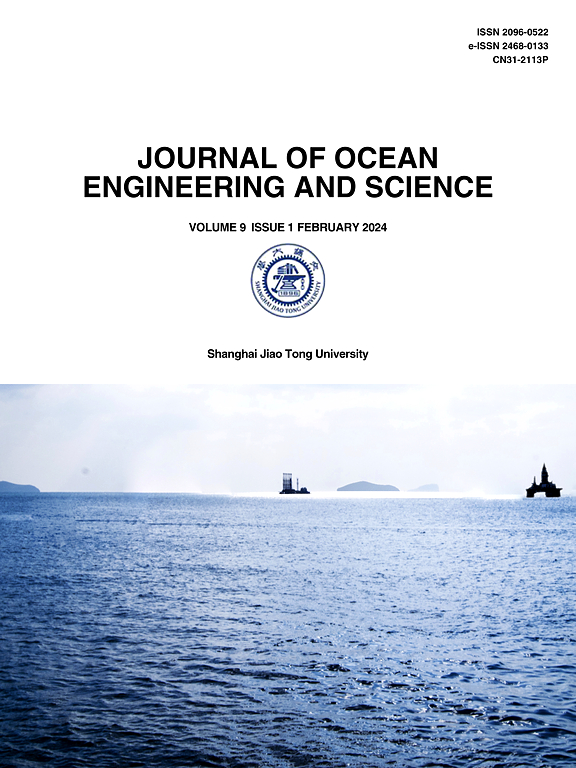ADRC-Based cooperative control for unmanned towing operation by multiple DP tugboats: A comparative study of two cooperative controllers
IF 11.8
1区 工程技术
Q1 ENGINEERING, MARINE
引用次数: 0
Abstract
This paper addresses the challenge of coordinated manipulation of an unactuated floating object by multiple tugboats to execute both positioning and towing operation within complex marine environments. We proposes a multi-layer cooperative control algorithm for the multi-tugboat system, including tugboat control level and cooperative control level. At the individual tugboat control level, the dynamic positioning system (DPS) has been enhanced to match the operational behavior of the tugboat, enabling it to handle cable tension and environmental disturbances during transit. The controller incorporates a simple yet effective linear active disturbance rejection control method (ADRC) to counter external disturbances and ensure accurate trajectory tracking without relying on preset models. Moving to the multi-tugboat collaboration level, two distinct control strategies are proposed for towing operations: formation-based (FB) and force-allocation-based (FAB). The FB strategy involves multiple tugboats forming a coordinated formation, with control focused on the formation center to indirectly manipulate the object. On the other hand, the FAB strategy utilizes model predictive control (MPC) for the object to allocate the necessary towing force for each cable, thereby determining the required actions for each tugboat based on the cable model and the needed towing force. Simulation results demonstrate that both control strategies can effectively maneuver the floating object with high accuracy to perform positioning and towing tasks. Nevertheless, due to the variations in their fundamental mechanisms, there are significant discrepancies in towline tension, tugboat utilization, and energy consumption.
基于adrc的多艘DP拖船无人拖航协同控制:两种协同控制器的比较研究
本文解决了多艘拖船在复杂海洋环境中协调操纵非驱动漂浮物以执行定位和拖曳操作的挑战。针对多拖船系统,提出了一种多层协同控制算法,包括拖船控制层和协同控制层。在单个拖船控制层面,动态定位系统(DPS)得到了增强,以匹配拖船的操作行为,使其能够处理运输过程中的电缆张力和环境干扰。该控制器采用一种简单而有效的线性自抗扰控制方法(ADRC)来对抗外部干扰,并确保精确的轨迹跟踪,而不依赖于预设模型。在多拖船协作层面,提出了两种不同的拖曳控制策略:基于编队(FB)和基于力分配(FAB)。FB策略涉及多个拖船组成一个协调的编队,控制集中在编队中心,间接操纵目标。另一方面,FAB策略利用对象的模型预测控制(MPC)来分配每条电缆所需的拖曳力,从而根据电缆模型和所需的拖曳力确定每艘拖船所需的动作。仿真结果表明,这两种控制策略都能有效、高精度地操纵漂浮物完成定位和拖曳任务。然而,由于其基本机制的差异,在拖缆张力、拖船利用率和能源消耗方面存在显著差异。
本文章由计算机程序翻译,如有差异,请以英文原文为准。
求助全文
约1分钟内获得全文
求助全文
来源期刊

Journal of Ocean Engineering and Science
Multiple-
CiteScore
11.50
自引率
19.70%
发文量
224
审稿时长
29 days
期刊介绍:
The Journal of Ocean Engineering and Science (JOES) serves as a platform for disseminating original research and advancements in the realm of ocean engineering and science.
JOES encourages the submission of papers covering various aspects of ocean engineering and science.
 求助内容:
求助内容: 应助结果提醒方式:
应助结果提醒方式:


